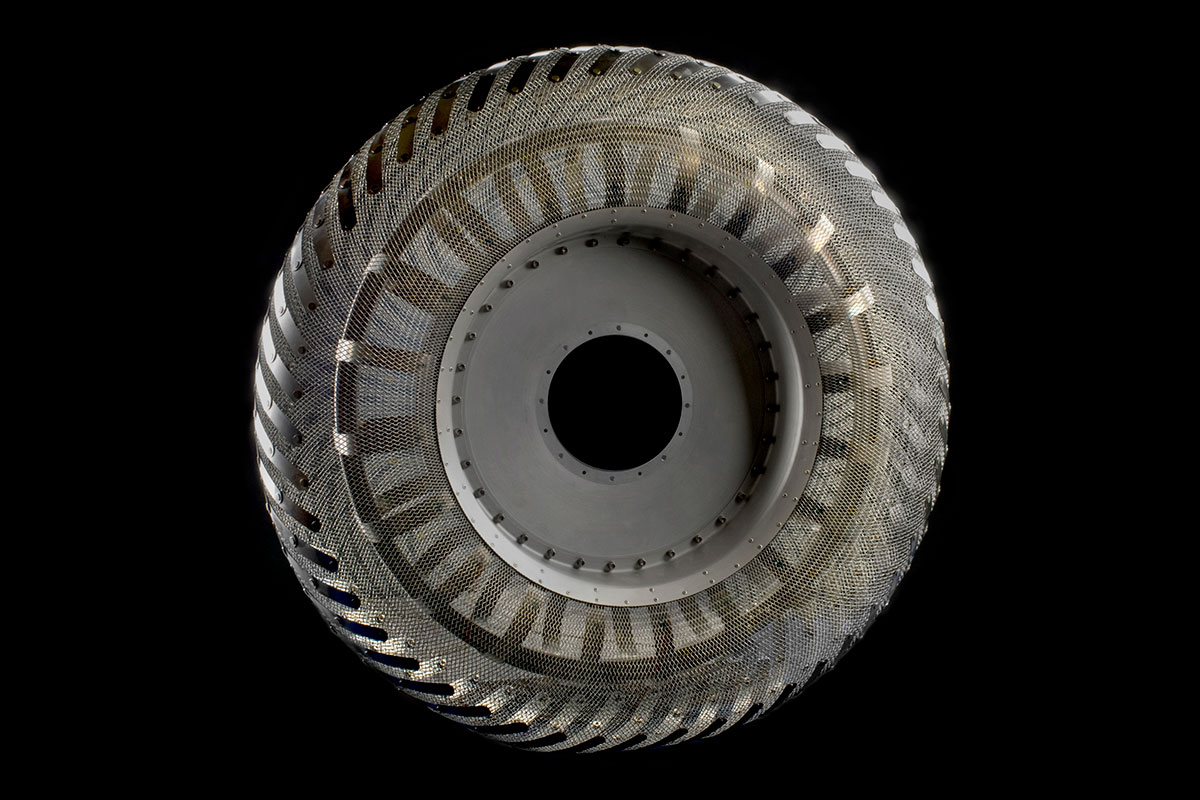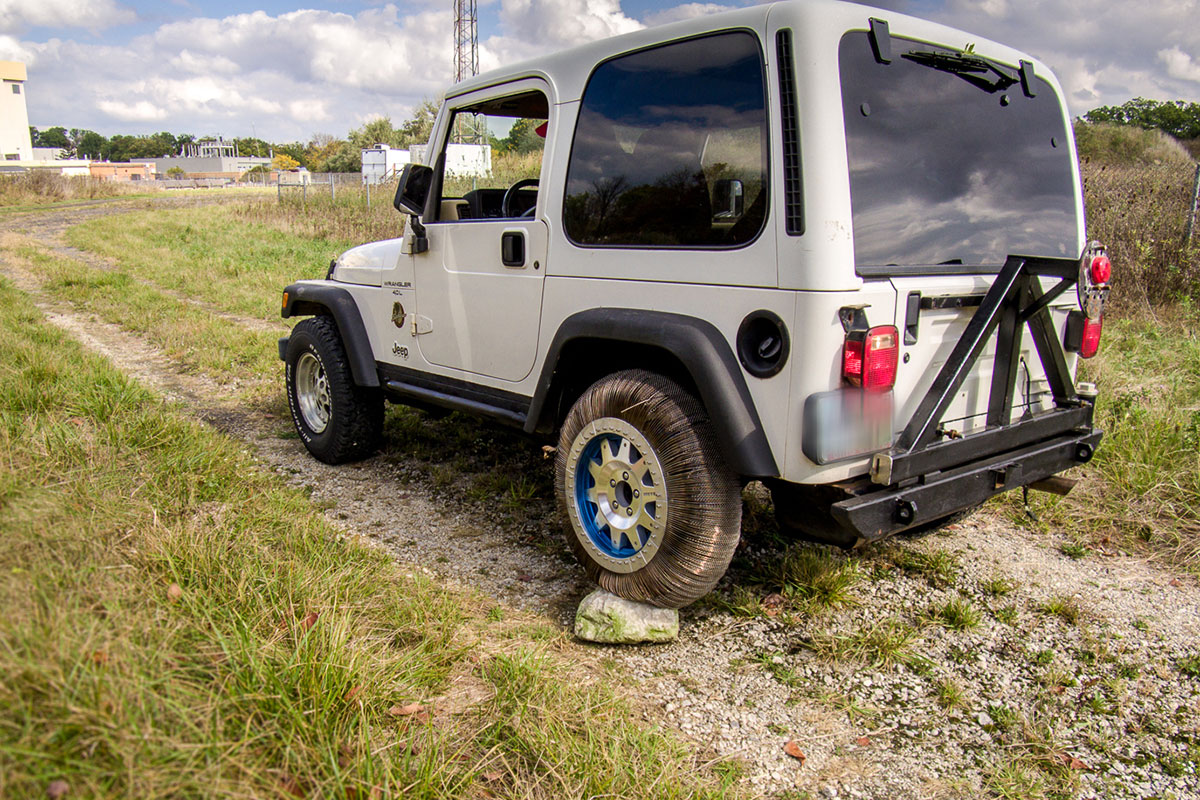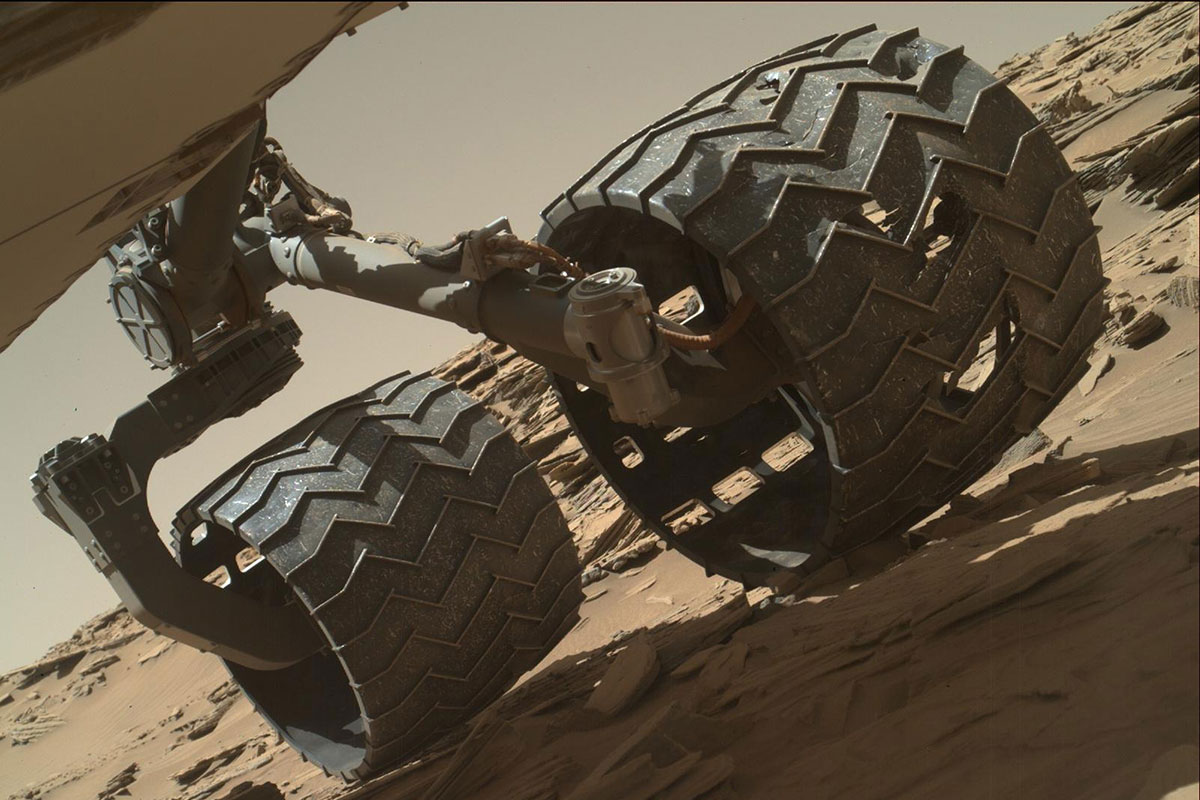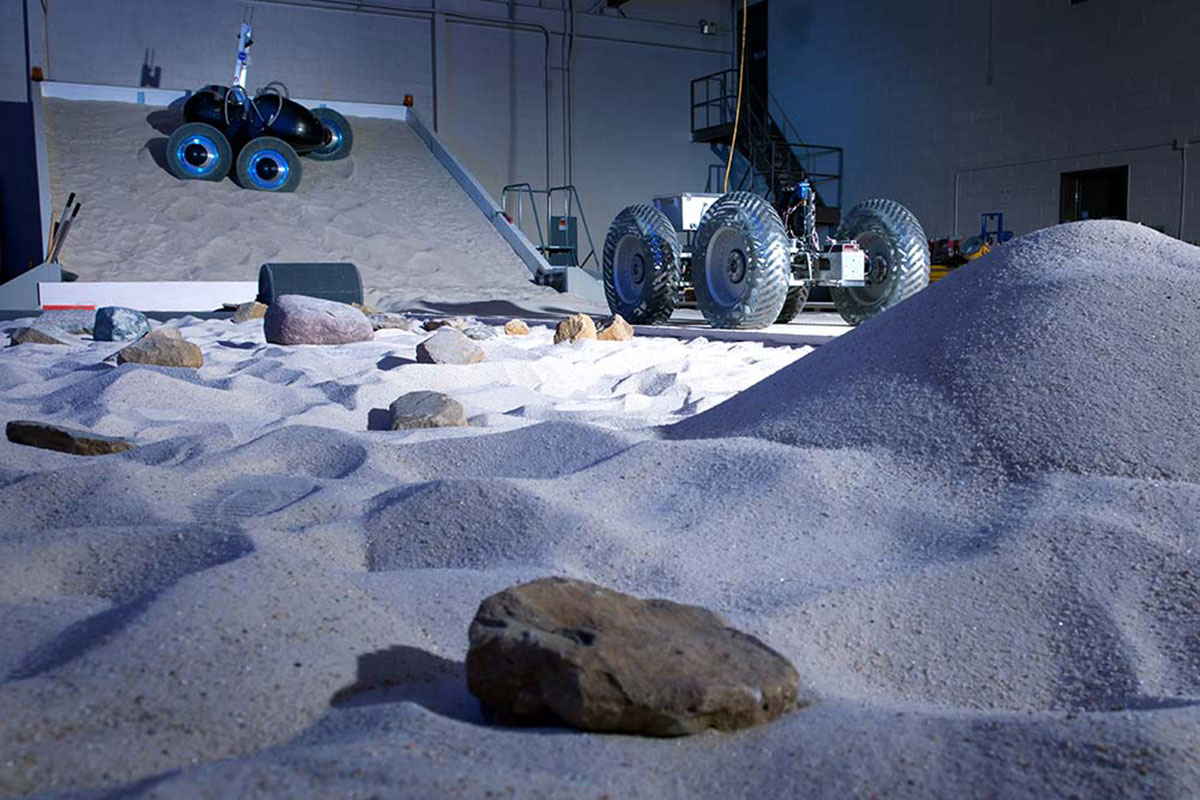Metal Tires for Mars: 'Shape Memory' Could Help Rovers Roll

A good tire means a lot when the nearest roadside assistance is 34 million miles (55 million kilometers) away. For future rovers that will explore the surface of Mars, NASA scientists have created a tire that contains no air, can handle the rugged Martian terrain, and may even have applications on Earth for trucks and off-road vehicles.
The new tire is made of a "shape memory alloy" composed of nickel and titanium. These alloys bend and twist like other metals (in materials science parlance, they are ductile rather than brittle). What makes them different is their atomic structure, which tends to resume its original shape after the alloy is bent, stressed or deformed.
The idea for the tire came from a meeting between Santo Padula, a NASA materials scientist at NASA's Glenn Research Center, and Colin Creager, a NASA engineer at Glenn who was working on how to make a Mars-ready tire for a rover. NASA's Curiosity rover had rigid wheels that sustained damage in 2013 from rolling on the rough terrain, even though the rover doesn't move very fast. [The Evolution of Mars Tires in Pictures]
Ordinarily, when metal like steel is bent, the bonds between atoms are stretched.

"If you overstretch [the metal], the bonds break," Padula told Space.com. "You've exceeded the elastic limit of that bond. Think of when you had a slinky as a kid, and stretched it too much." An overstretched slinky, he said, won't return to its former shape.
The alloy works because its arrangement of nickel and titanium atoms requires the least amount of energy out of any alternative arrangement, so the atoms naturally fall back into that arrangement, he said. It takes energy to stretch or bend a shape memory alloy, but once that energy is no longer being applied, the atoms fall back to their original positions.
Padula said the nickel-titanium alloy bonds will break eventually, but the material can handle 30 times the deformation that conventional spring steels, like the ones in car suspensions or piano strings, can sustain.
Get the Space.com Newsletter
Breaking space news, the latest updates on rocket launches, skywatching events and more!
A tire with no air
An ordinary tire provides shock absorption because the tire is a soft material (rubber) filled with air. With shape memory alloys, engineers can make a tire out of arches that support a mesh with no air inside. The "bounce" comes from metal bending and springing back into its former shape.

When Padula and Creager met, the latter was trying to come up with a way to make a mesh tire similar to the ones on the Apollo-era vehicles used on the moon, Creager told Space.com.
The problem was that the springy mesh structure of the moon vehicles' tires could become permanently bent on the Martian terrain.
"You put too much load in one spot, and you deform the springs," he said. "Nothing fully solved that problem." That was when he met Padula, who suggested the shape memory alloys.

Tires in space can't be the gas-filled types we use on Earth, according to NASA. Filling a tire with gas is a problem in space missions, because if the tire gets punctured, changing it is an involved process, even if there are humans around to do it. Clearly a flat on Mars or the moon isn't easy to fix. (One type Apollo-era tire was gas-filled, but that was for a kind of pulled cart on a crewed mission, not a powered vehicle.) [A Brief History of Mars Missions]
The shape memory alloy tires have been tested at the Mars Life Test Facility in NASA's Jet Propulsion Laboratory. The tires (which are roughly the size of an ordinary car tire) were also tested on a Jeep, as shown in a NASA video.
While the new tires won't be on the next NASA rover going to Mars — the Mars 2020 rover — they are part of a new rover design proposal.
Padula said he thinks the tires could be used on earthbound vehicles someday. Even though it might seem like a metal tire would be harder to produce or more expensive than a traditional tire, it could save money for trucking companies, because there's no problem with under-inflating the tire.
"You think that if under-inflation costs a trucking company a few thousand dollars a year in fuel, this could save money even if the up-front capital cost is higher," Padula said.
Follow us @Spacedotcom, Facebook and Google+. Original article on Space.com.
Join our Space Forums to keep talking space on the latest missions, night sky and more! And if you have a news tip, correction or comment, let us know at: community@space.com.

Jesse Emspak is a freelance journalist who has contributed to several publications, including Space.com, Scientific American, New Scientist, Smithsonian.com and Undark. He focuses on physics and cool technologies but has been known to write about the odder stories of human health and science as it relates to culture. Jesse has a Master of Arts from the University of California, Berkeley School of Journalism, and a Bachelor of Arts from the University of Rochester. Jesse spent years covering finance and cut his teeth at local newspapers, working local politics and police beats. Jesse likes to stay active and holds a fourth degree black belt in Karate, which just means he now knows how much he has to learn and the importance of good teaching.









